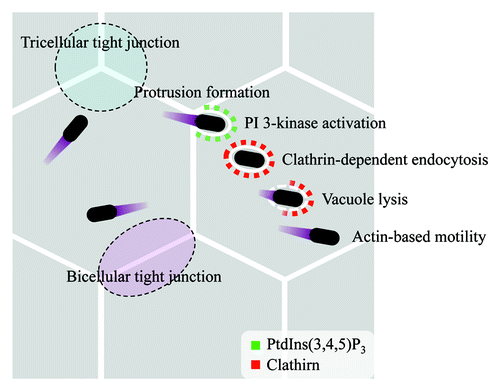Figures & data
Figure 1. Proposed model for Shigella cell-cell spreading. When Shigella moves from one epithelial cell to neighboring epithelial cells, Shigella-containing pseudopodia target tricellular tight junctions. PI 3-kinase is activated upon formation of a Shigella-containing pseudopodium. PI 3-kinase activity is required to recruit clathrin to the plasma membrane where the bacteria-containing pseudopodium was engulfed. Finally, an elongating pseudopodium is fully engulfed and undergoes clathrin-dependent endocytosis by a neighboring cell. Then, Shigella lyses the double plasma membranes and obtains the actin-based motility. Shigella can spread cell-to-cell repeat these process.
